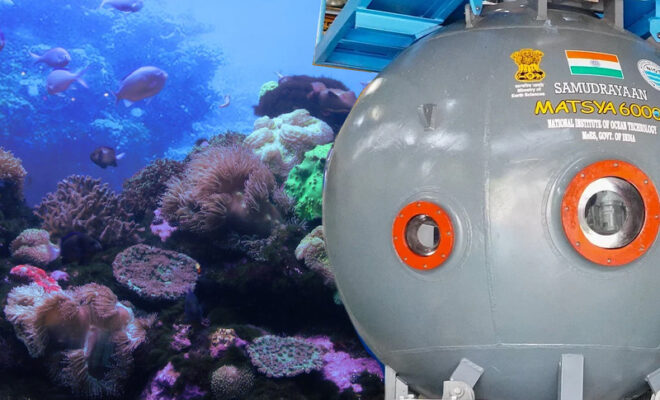Is India Trying To Target ‘Blue Economy’ With Its Samudrayaan?

Before we talk about India’s Samudrayaan mission & its co-partener ‘Matsya 6000’, let’s first understand what is Blue Economy is & how it’ll impact the world!
The ‘Blue Economy’ is a concept that centers around the sustainable utilization of ocean resources to foster economic growth while preserving the health of the marine ecosystem.
It encompasses various sectors, including fisheries, tourism, renewable energy, shipping, and mineral resources, among others. Essentially, it’s about utilizing the vast potential of our oceans in a responsible way.
‘Samudrayaan’ for India’s Blue Economy Vision
The ‘Samudrayaan’ project plays a crucial role in accomplishing India’s ‘Blue Economy’ vision. Here’s how:
1. Resource Exploration
Deep sea exploration, like the ‘Samudrayaan’ mission, allows India to tap into the vast, untapped resources lying beneath the ocean floor.
This includes valuable minerals like copper, cobalt, nickel, and manganese found in polymetallic nodules. Access to these resources can significantly boost India’s economic growth.
2. Scientific Understanding
By delving into the deep sea, human civilization can gain a better understanding of the ocean’s biodiversity, ecosystems, and their potential for sustainable use. This knowledge is essential for the entire world for informed policymaking and responsible resource management.
3. Job Creation
The ‘Samudrayaan’ project, along with broader ‘Blue Economy’ initiatives, can generate employment opportunities in various sectors, benefiting Indian businesses and individuals.
4. Strategic Advantages
Deep sea exploration enhances India’s strategic capabilities, particularly in areas related to maritime security and resource management. This is vital in safeguarding our maritime interests.
The Challenge of Deep Sea Exploration
The exploration of the deep sea is still very difficult even for the developed nations and hi-tech scientific organizations. But India is ready for this with its advanced technology and dedication.
Deep sea exploration is incredibly challenging for several reasons. Here are the 3 biggest challenges.
1. Extreme Conditions
Beyond 200 meters, the ocean becomes pitch dark, extremely cold, and the pressure increases dramatically. These conditions make it difficult for humans and technology to operate effectively.
2. Technological Complexity
Developing submersibles and equipment capable of withstanding these extreme conditions is no small feat. It requires advanced engineering and innovation.
3. High Costs
Deep sea missions are expensive due to the specialized equipment and technology involved. This makes it a significant investment for any country.
The space is clear, thus several countries are consistently launching their rockets & satellites into space but they don’t have enough plans to explore the deep sea.
India’s Achievement in Deep Sea Exploration
India’s successful missions like ‘Chandrayaan-3’ demonstrate our scientific and technological capabilities. These achievements instill confidence in our ability to undertake challenging endeavors, such as deep sea exploration.
Also Read:- NPCI And Thomas Cook Launch RuPay Forex Card For UAE
While deep sea exploration is indeed complex, India has made remarkable strides in this field. The ‘Samudrayaan’ project showcases our commitment to harnessing the untapped potential of our oceans.
This is not only crucial for our ‘Blue Economy’ vision but also for the growth of Indian businesses and companies.
The ‘Samudrayaan’ project is a significant step towards India’s ‘Blue Economy’ vision. It offers immense opportunities for economic growth, job creation, and scientific advancement.
While deep sea exploration has lots of challenges, India has demonstrated its prowess in tackling complex missions including Mangalyaan, Chandrayaan-3 and Aditya L1. Now India is ready to hit the target of Blue Economy through its Samudrayaan mission.



